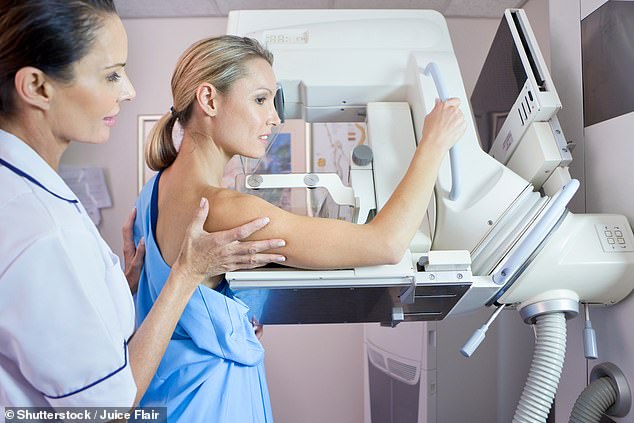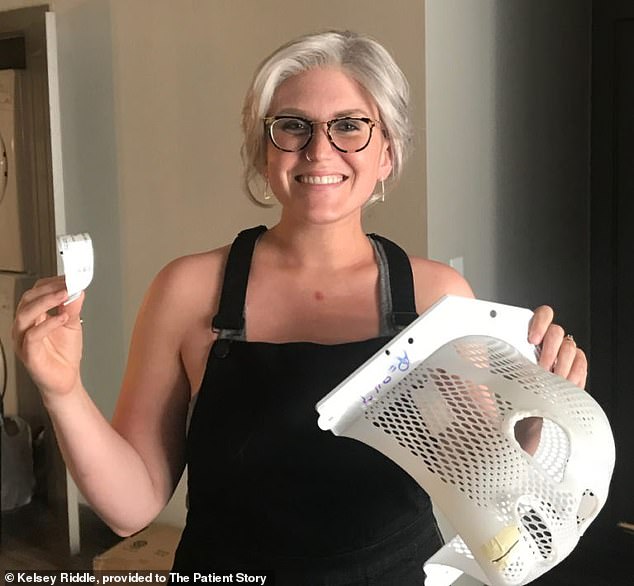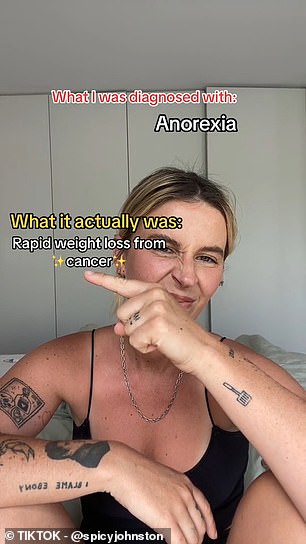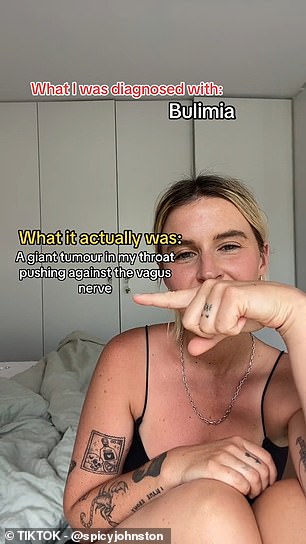Doctors Warn 130,000 Americans Are Living With Undiagnosed Advanced Cancer: ‘Ticking Time Bomb’
America is staring down the barrel of an explosion in late-stage cancer after more than 100,000 cases were missed during the Covid pandemic.
Doctors have suspected for years that healthcare disruptions and lockdowns in the early days of the pandemic led to fewer diagnoses.
Now they’ve put a number on it, showing that nearly 130,000 cancer cases were missed in 2020 and 2021, or 9 percent fewer than the expected number.
Study author Dr Uriel Kim, a researcher at Case Western University in Ohio, said: ‘If cancer incidence does not improve further, a wave of patients with more advanced disease can be expected in the coming years.’

It is recommended to begin breast cancer screening at age 45 and continue annually. Doctors recommend testing at different ages and intervals based on your gender, family history and personal risk factors, such as smoking
Dr Pat Basu, the president of Cancer Treatment Centers of America, who was not involved in the study, said doctors were focused early on on flattening the curve of Covid cases.
He said: ‘However, there is also another curve that is not often mentioned and that requires our urgent attention, namely the ticking time bomb that flies under the radar that we call the cancer ‘Shadow Curve’.
The researchers found that the number of cancer diagnoses rose again in 2021, almost meeting expectations, but still lagging behind.
During the pandemic, many screening centers closed during the lockdown, while others faced severe staff shortages.
This meant that 9.4 million screening tests that should have happened did not happen, the National Cancer Institute.
This affected all medical practices a 2021 report from the The American Medical Association found that 40 percent of people admitted to missing medical appointments during the pandemic.
Even when people could go to clinics, many chose not to – for fear of contracting the virus.
The 2021 survey found that 57 percent of respondents skipped the office for fear of COVID exposure.
All told, doctors are bracing for the pandemic’s impact on cancer and other diseases.
They feared that missed diagnoses could trigger a wave of deadlier diseases. Julianne Cooleysaid a senior statistician who has studied this gap at UC Davis but was not involved in the current research
Dr. Cooley said: “Because so many people with cancer have gone without in-person health care and screenings, they are likely to be diagnosed at a later stage when their prognosis is worse.”
The study of Dr. Kim, which was published in the Journal of the American Medical Association Network Open, intended to put a number on that problem.
To do this, the team of researchers analyzed more than 15 million cases of invasive cancer between 2000 and 2021. This gave them an idea of how cancer rates would have trended during the pandemic.
Their report shows that 759,810 cases of cancer were diagnosed in 2020, but their model suggests that 127,931 cases were likely missed.
For the entire year this represents a decrease of 8.6 percent, but during parts of the year the number of diagnoses fell by as much as 50 percent.
The largest decrease occurred in lung, prostate and skin cancer. Men had a larger decline, as did people in counties with low poverty rates and high education.
In 2021, interest rates recovered close to normal projections, affecting 825,645 people that year. This was different from what doctors expected in only 2764 cases.
Dr. Kim said: ‘Our analysis found that cancer detection and diagnosis improved overall in 2021, following significant disruptions in 2020.’
Major medical organizations, such as the American College of Surgeons and the American Cancer Society, took action in early 2021 to address this problem.

Kelsey Riddle, 32, mistook her first-stage lymphoma symptoms, including itchy legs, for allergies


Bella Johnston, 27, was initially told by doctors that her signs of rare throat cancer were an eating disorder, such as anorexia or bulimia, and by the time she was finally properly diagnosed, she looked “like death.”
This two organizations united to provide support to 748 local cancer clinics to supplement their screening programs and get people back to the office.
Such efforts could have helped flatten the curve in 2021, as could lifting the lockdown.
Cancer screening is a crucial cornerstone of modern cancer care because detecting the disease early can be the difference between life and death.
If cancer is allowed to grow unnoticed in the body, it can spread to more parts of the body, becoming more deeply entrenched and more difficult to defeat with traditional therapies.
According to the National Cancer Institute: ‘By the time symptoms appear, the cancer may have grown and spread. This can make the cancer more difficult to treat or cure.’
Young women in particular have taken to social media to share their late-stage cancer diagnoses, hoping to raise awareness about the importance of regular doctor visits and listening to your body.
Graduate Kelsey Riddle, 32, had mistaken her stage 2 lymphoma for allergies but was able to beat her cancer. Bella Johnston, 27, was initially told by doctors that her signs of rare throat cancer were an eating disorder such as anorexia or bulimia – and ‘seemed almost dead’ by the time she was diagnosed.
Doctors therefore recommend making regular appointments to detect diseases and monitor other warning signs. The age and frequency of screening that doctors recommend varies based on your age, gender, and family history.
For example, if one of your parents has early-stage colon cancer, doctors may recommend that your screening start earlier than average.
In general, however, the ACS recommends that men be screened for prostate cancer starting at age 50. Current or former smokers should start testing for lung cancer at the same age.
